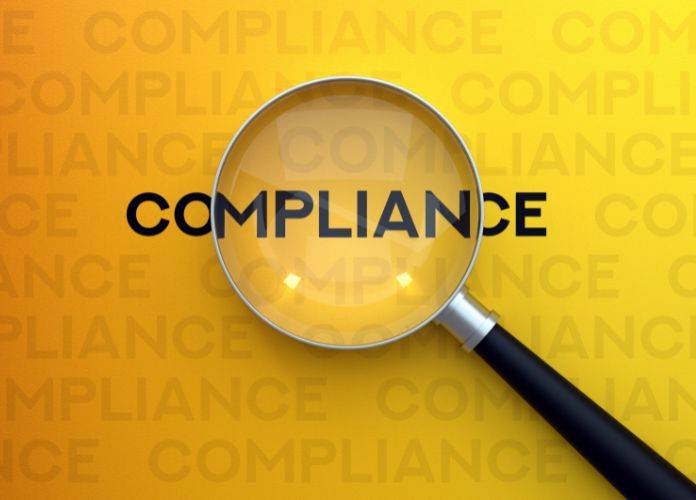Although its implementation is still months away, the European Union’s Markets in Crypto-Assets (MiCA) regulations will draw a clear line between compliant and non-compliant crypto asset service providers.
Many consider the promise of the European Union’s Markets in Crypto-Assets (MiCA) regulation to be a very good first step in creating consistent international regulation on crypto assets.
The Role Of Regulation
For those countries that aren’t in the EU, the regulatory framework of MiCA still provides great guidance on creating their own regulations; and so it is no surprise that the development of this framework has been followed closely on a global scale. If all goes well, MiCA should be the first step in a more harmonised approach to regulating crypto assets across the globe.
While the framework does set out a number of strong definitions on crypto assets (such as e-money tokens, asset referenced tokens, and utility tokens) and other crypto services and service providers, the regulation does not apply to other assets such as non-fungible tokens (NFTs). The ink has barely dried on MiCA 1.0, but crypto experts are arguing that there already needs to be additional legislation in order to cover these additional pieces of the crypto ecosystem that aren’t covered by MiCA or other existing regulation.
Although it does have its limitations, we should expect to see that MiCA creates better compliance practice for crypto providers, particularly as it will have such an influence over primary market activities (such as issuance and public offering) and proper access to secondary market activities (such as listings). Ideally it will promote transparency, good governance, consumer protection, and implement measures to prevent market abuse, financial crimes, ensuring integrity of the entire crypto asset market.
Preparing for regulation
There will most likely be a huge shift in the crypto market once MiCA comes into effect. Existing crypto asset service providers (CASPs) will need to become (formally) authorised and licensed, adhering to specific rules on governance (including appropriate risk management procedure), capital requirements, and transparency requirements (such as the creation of white papers on newly-issued crypto assets). Those entities already providing crypto assets services will need to perform a thorough assessment on their activities and regulatory status as soon as possible, in order to start preparing the documentation needed to apply for the authorisation, as it can be a complex and long process.
2022 was an interesting year for crypto markets; there were several high profile collapses, and the rubber stamping of MiCA requirements put real pressure on CASPs to become more aware of the need for regulation and compliance standards. This pressure has forced companies to prepare themselves for a more regulated environment, in which regulatory compliance is the key weapon to attract new customers and, at the same time, ensure that their business is sustainable enough to continue thriving in what is a difficult financial market. In this regard, crypto companies have already started preparing themselves for the regulatory requirement established by new regulations such as MiCA and, most of the industry players will most likely be ready once the regulation takes effect.
There will, of course, be a school of thought that is naturally resistant towards regulation, particularly amongst those DeFi providers that are against the interference of central organisations in the crypto ecosystem. They believe that DeFi was established to create efficiency and independence, and regulation would go against all of these. These players could either cease to operate or will need to tweak their business model in order to survive once MiCA comes into effect.
A compliance-first approach
While conservative DeFi providers may be resistant to the intrusion of traditional financial regulators, there is plenty to borrow from traditional finance (TradFi) in terms of adopting a compliance first-approach and getting ahead of the incoming regulation. It could be almost two years until we see MiCA come into effect, and crypto providers could benefit from creating better practices over the coming months in order to seamlessly pass the test once the regulations tighten. Not only will this make the transition to post-MiCA easier, it will also help to create more trust with both crypto holders and the regulations.
Compliance starts with a very strong tone at the top. The management board of CASPs need to establish a very strong governance structure in order to properly review, assess, implement appropriate mitigating measures and approve risks according to the company’s established risk appetite.
Compliant organizations will also need to have a robust Compliance Team including experienced staff that will be able to provide advice, assess and mitigate risks, prepare recommendations and implement the appropriate requirements established by the Compliance Program.
In addition, crypto providers need to ensure the implementation of a very strong Compliance/AML Framework. Policies, procedures and work documents need to be drafted and implemented, with the description of the most important processes and controls in place to mitigate integrity and operational risks. Employees need to be duly trained, even when not directly involved in compliance activities. Finally, CASPs need to put in place a strong and secure KYC (know-your-customer) process in order to be able to deeply understand the individuals or legal entities that they are providing services to (with enough information and documentation collected), and avoid financial crimes being committed through their apps and platforms.
This may mean that customers will need to share more information with crypto providers than they typically do currently (e.g. source of funds and proof of address) which could slow down processes. However, the industry as a whole will benefit in the long run; better compliance will attract more traditional market participants and more investment, which will ultimately fuel more innovation in the crypto industry.
MiCA may be on the horizon, but it will be at least another 8 months before it could come into effect in Q4 of 2024. Self-governance and self-regulation will continue to play a huge role in distributing responsibility on the blockchain and creating better practices within a decentralised structure. However, as we have seen more recently, if decentralised finance is left completely unchecked then crypto markets are not stable or sustainable; instead we need to look towards a Web 2.5 – maintaining a bridge between TradFi and DeFi, and having enough regulation in place to provide more secure, stable and reliable financial services.8

About The Author
Paula Steiner is Group Head of Compliance at Fiat Republic. She has more than 8 years of Regulatory Compliance and FinCrime experience in financial institutions and Fintechs. Her previous roles include Senior Consultant at Deloitte and Compliance Officer at Mollie Payments







